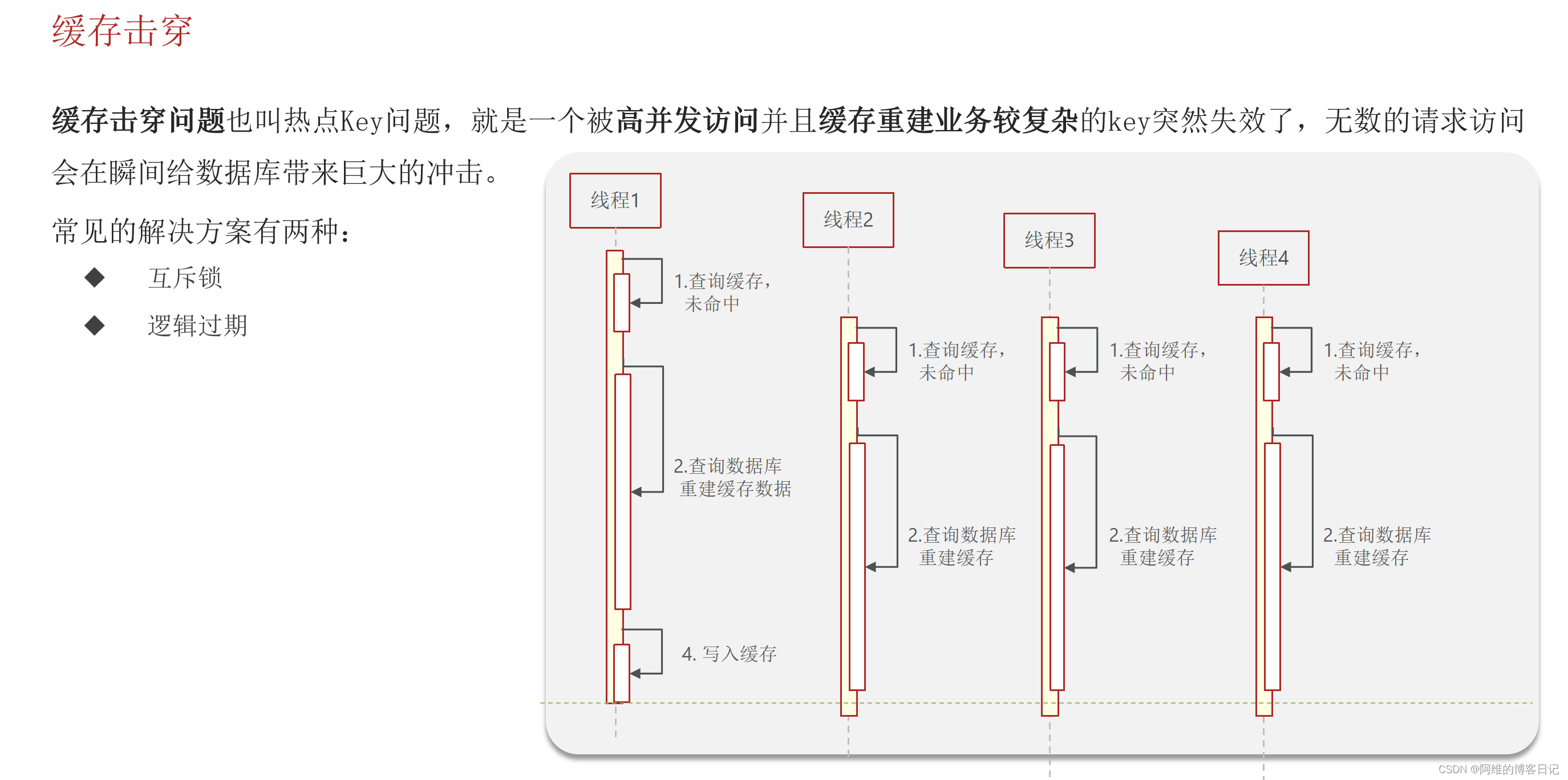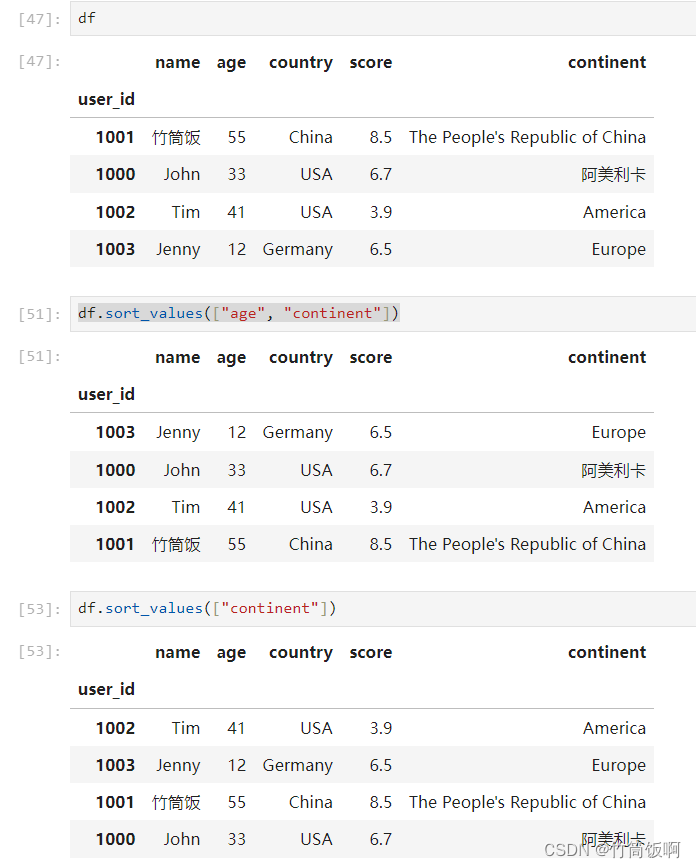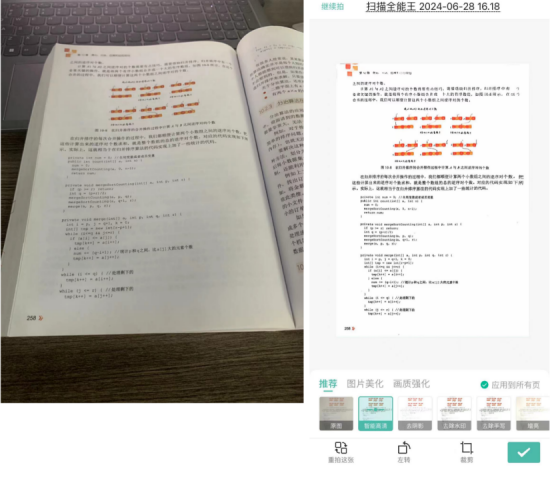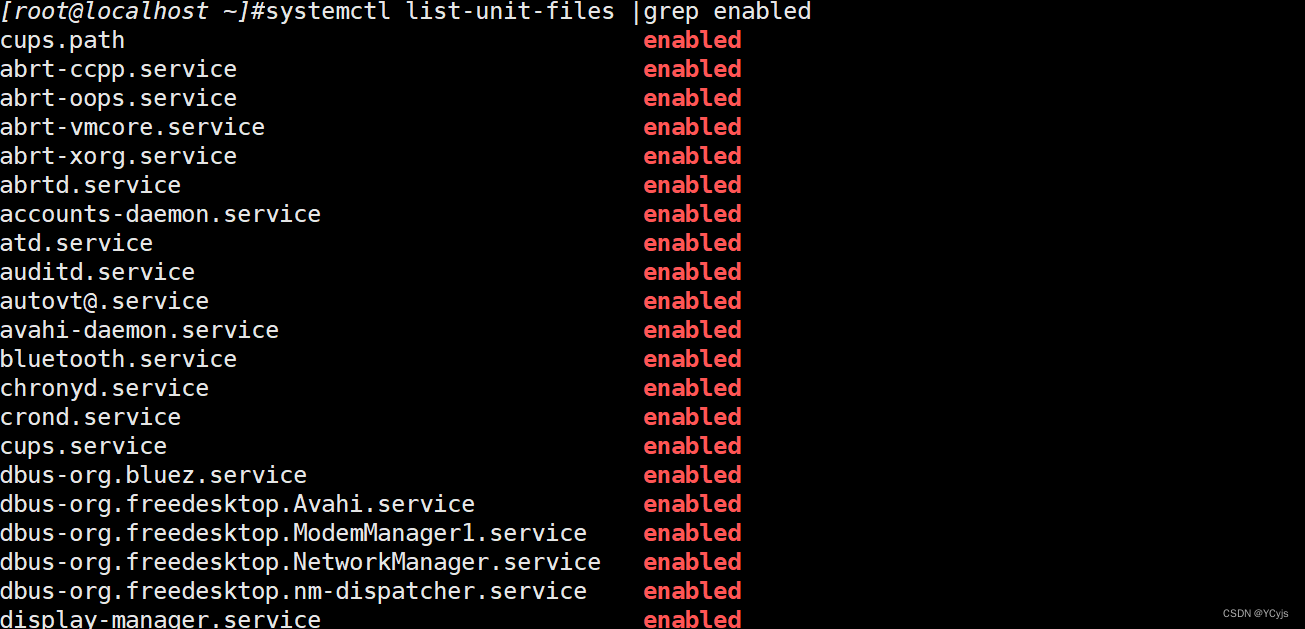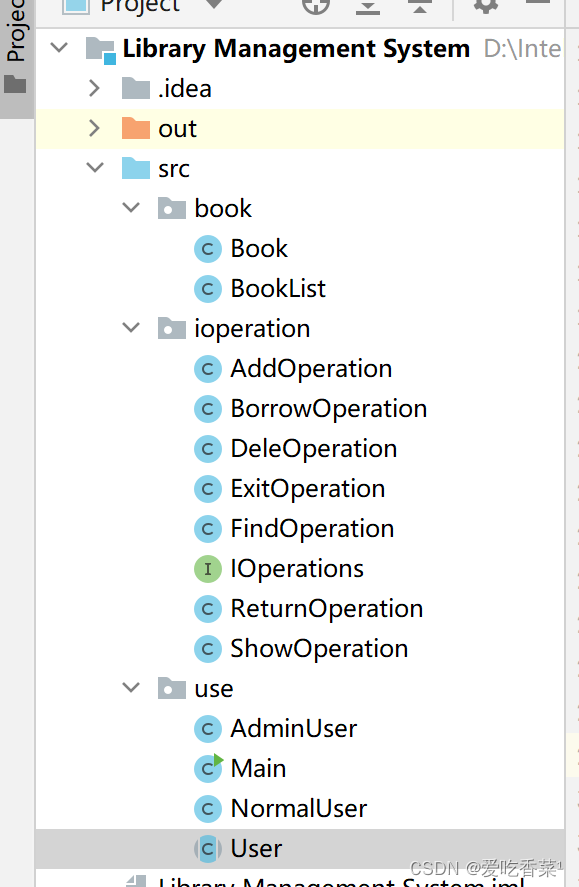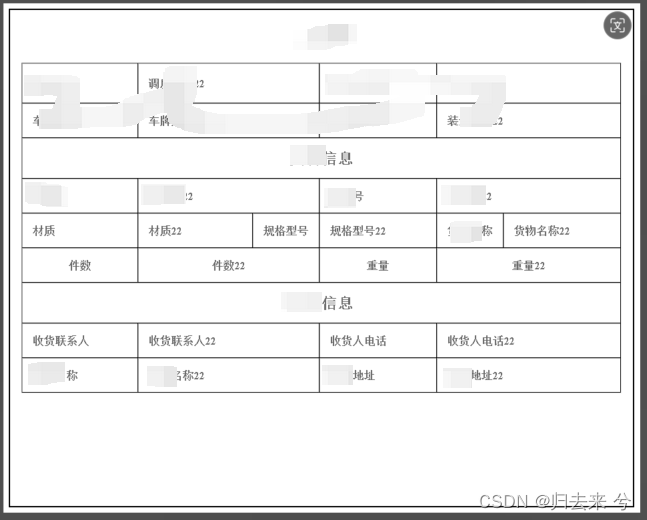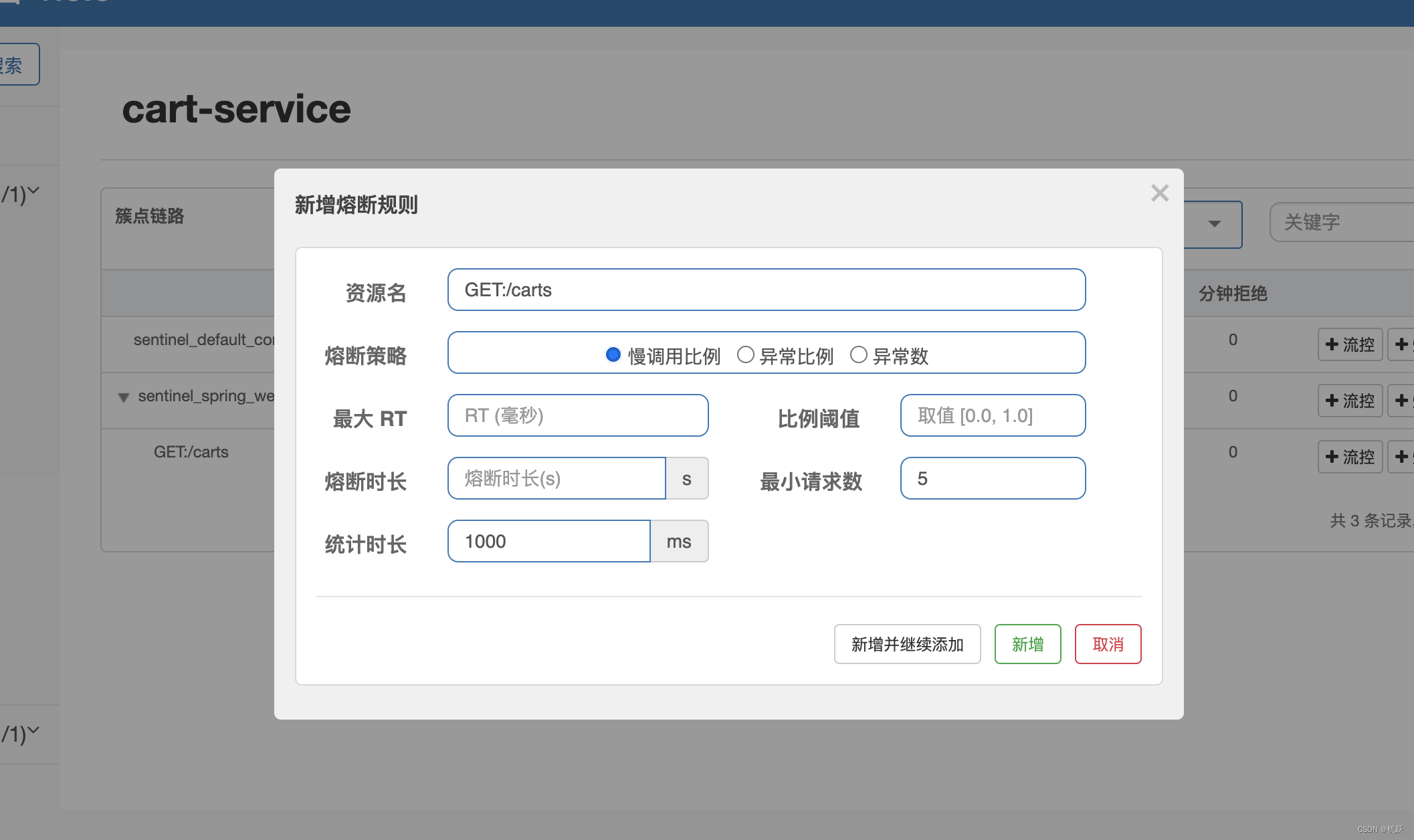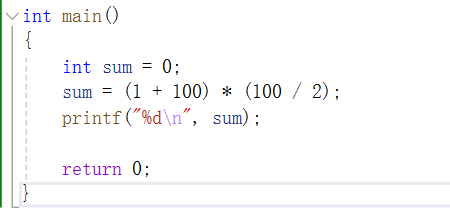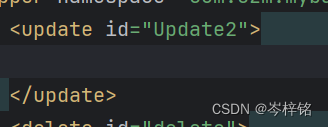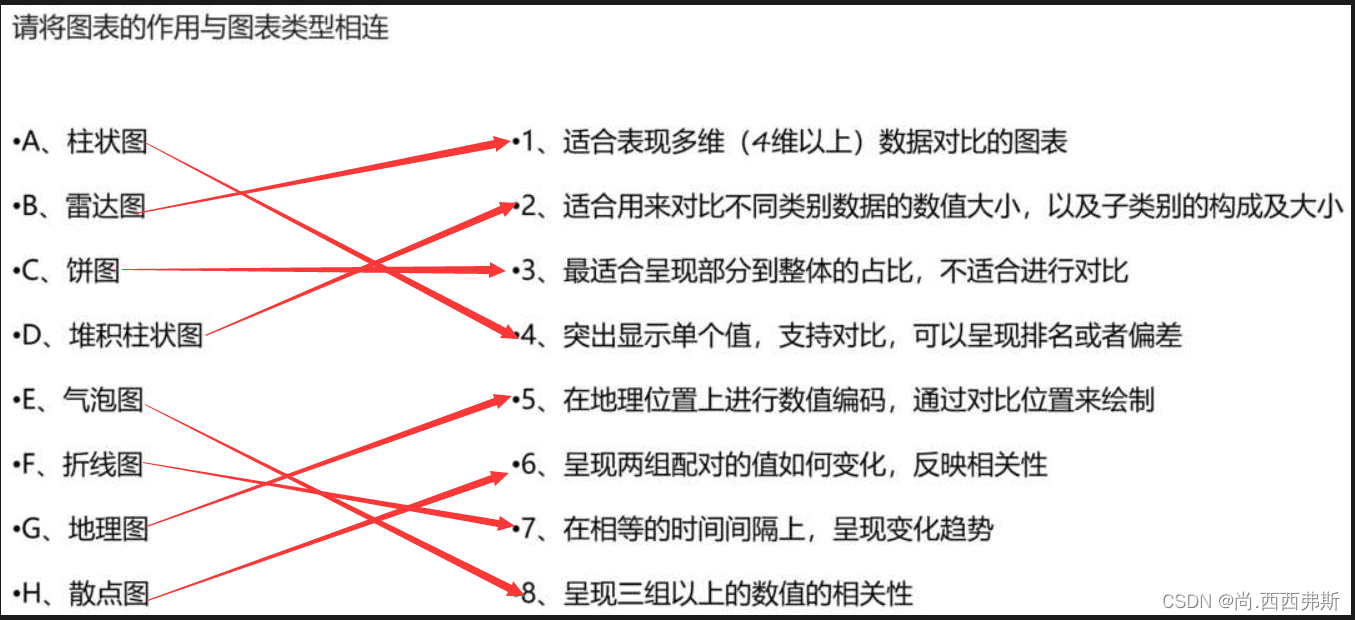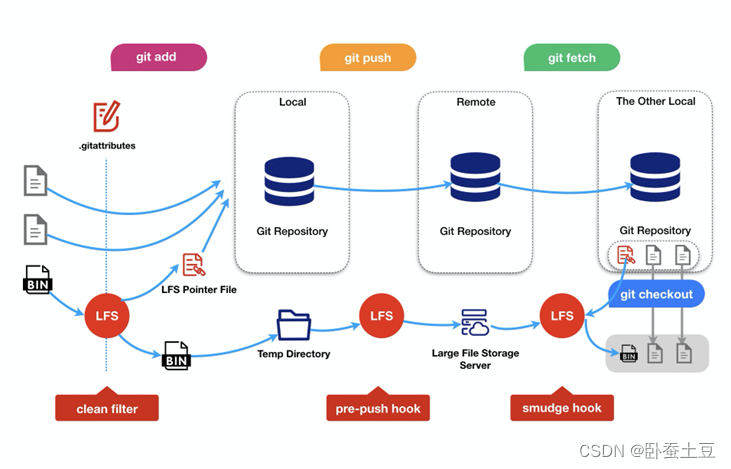加的columns越多,说明一个普通的update中where 条件校验的列越多
update "SCOTT"."EMP" set "ENAME" = 'ALLKEY' where "EMPNO" = '7566' and "ENAME" = 'JONES' and "JOB" = 'MANAGER' and "MGR" = '7839' and "HIREDATE" = TO_DATE('02-APR-81', 'DD-MON-RR') and "SAL" = '2975' and "COMM" IS NULL and "DEPTNO" = '20' and ROWID = 'AAASZHAAEAAAACXAAD';
GOAL
NOTE: In the images and/or the document content below, the user information and environment data used represents fictitious data from the Oracle sample or bulit-in schema(s), Public Documentation delivered with an Oracle database product or other training material. Any similarity to actual environments, actual persons, living or dead, is purely coincidental and not intended in any manner.
Supplemental Logging :
Redo log files are generally used for instance recovery and media recovery. The data needed for such operations is automatically recorded in the redo log files. However, a redo-based application may require that additional columns be logged in the redo log files. The process of logging these additional columns is called supplemental logging. Also other actions may depend on supplemental logging, e.g. DataPump import (impdp) uses either "Direct_Path" or "External_Table" mode for loading depending on supplemental logging (See Note 552424.1).
Please refer to the following documentation for Utilities, which mentions two important points regarding Supplemental Logging. 727633.1
1) You must enable supplemental logging prior to generating log files that will be analyzed by LogMiner.
When you enable supplemental logging, additional information is recorded in the redo stream that is needed to make the information in the redo log files useful to you. Therefore, at the very least, you must enable minimal supplemental logging, as the following SQL statement shows:
ALTER DATABASE ADD SUPPLEMENTAL LOG DATA;
To determine whether supplemental logging is enabled, query the V$DATABASE view, as the following SQL statement shows:
SELECT SUPPLEMENTAL_LOG_DATA_MIN FROM V$DATABASE;
If the query returns a value of YES or IMPLICIT, minimal supplemental logging is enabled.
You can turn off Supplemental Logging by following command.
SQL> ALTER DATABASE DROP SUPPLEMENTAL LOG DATA;
2) By default, Oracle Database does not provide any supplemental logging, which means that by default LogMiner is not usable.
Let us take an example of this, which is using Online Catalog option for logminer dictionary.
Part A : Shows result from V$LOGMNR_CONTENTS when supplemental logging is turned OFF (default option )
Part B : Shows result from V$LOGMNR_CONTENTS when supplemental logging is turned ON.
SOLUTION
Part A :
Shows result from V$LOGMNR_CONTENTS when supplemental logging is turned OFF (default option )
-----------------------------------------------------------------------------------------------------------------
Example assumes that database is in ARCHIVE LOG MODE
SQL> connect / as sysdba
Connected.
SQL> archive log list;
Database log mode Archive Mode
Automatic archival Enabled
Archive destination USE_DB_RECOVERY_FILE_DEST
Oldest online log sequence 8
Next log sequence to archive 10
Current log sequence 10
SQL> alter system switch logfile;
System altered.
SQL> SELECT NAME FROM V$ARCHIVED_LOG
2 WHERE FIRST_TIME = (SELECT MAX(FIRST_TIME) FROM V$ARCHIVED_LOG);
NAME
--------------------------------------------------------------------------------
<ORACLE_HOME>\FLASH_RECOVERY_AREA\<SID>\ARCHIVELOG\<DIR>\<FILENAME1>.ARC
SQL> SELECT SUPPLEMENTAL_LOG_DATA_MIN FROM V$DATABASE;
SUPPLEME
--------
NO
SQL> connect scott/tiger
Connected.
SQL> create table test ( n number );
Table created.
SQL> insert into test values ( 1);
1 row created.
SQL> insert into test values (2);
1 row created.
SQL> commit;
Commit complete.
SQL> connect / as sysdba
Connected.
SQL> SELECT NAME FROM V$ARCHIVED_LOG WHERE FIRST_TIME = (SELECT MAX(FIRST_TIME) FROM V$ARCHIVED_LOG);
NAME
-----------------------------------------------------------------------------------------------------------------------------------------
<ORACLE_HOME>\FLASH_RECOVERY_AREA\<SID>\ARCHIVELOG\<DIR>\<FILENAME2>.ARC
SQL> EXECUTE DBMS_LOGMNR.ADD_LOGFILE( -
> LOGFILENAME =>'<ORACLE_HOME>\FLASH_RECOVERY_AREA\<SID>\ARCHIVELOG\<DIR>\<FILENAME2>.ARC' , -
> OPTIONS => DBMS_LOGMNR.NEW);
PL/SQL procedure successfully completed.
SQL> EXECUTE DBMS_LOGMNR.START_LOGMNR( -
> OPTIONS => DBMS_LOGMNR.DICT_FROM_ONLINE_CATALOG);
PL/SQL procedure successfully completed.
SQL> SELECT SQL_REDO , SQL_UNDO FROM V$LOGMNR_CONTENTS WHERE username='SCOTT';
no rows selected
SQL> EXECUTE DBMS_LOGMNR.END_LOGMNR();
PL/SQL procedure successfully completed.
-----------------------------------------------------------------------------------------------------------
Part B :
Shows result from V$LOGMNR_CONTENTS when supplemental logging is turned ON.
The same example as above but with Supplemental Logging turned ON.
SQL> ALTER DATABASE ADD SUPPLEMENTAL LOG DATA;
Database altered.
SQL> SELECT SUPPLEMENTAL_LOG_DATA_MIN FROM V$DATABASE;
SUPPLEME
--------
YES
SQL> alter system switch logfile;
System altered.
SQL> connect scott/tiger
Connected.
SQL> create table test2 ( n2 number );
Table created.
SQL> insert into test2 values ( 2211);
1 row created.
SQL> insert into test2 values ( 2222);
1 row created.
SQL> commit;
Commit complete.
SQL> connect / as sysdba
Connected.
SQL> alter system switch logfile;
System altered.
SQL> SELECT NAME FROM V$ARCHIVED_LOG WHERE FIRST_TIME = (SELECT MAX(FIRST_TIME) FROM V$ARCHIVED_LOG);
NAME
------------------------------------------------------------------------------------------------------------------------------------------------------
<ORACLE_HOME>\FLASH_RECOVERY_AREA\<SID>\ARCHIVELOG\<DIR>\<FILENAME3>.ARC
SQL> EXECUTE DBMS_LOGMNR.ADD_LOGFILE( -
> LOGFILENAME => '<ORACLE_HOME>\FLASH_RECOVERY_AREA\<SID>\ARCHIVELOG\<DIR>\<FILENAME3>.ARC' , -
> OPTIONS => DBMS_LOGMNR.NEW);
PL/SQL procedure successfully completed.
SQL> EXECUTE DBMS_LOGMNR.START_LOGMNR( -
> OPTIONS => DBMS_LOGMNR.DICT_FROM_ONLINE_CATALOG);
PL/SQL procedure successfully completed.
SQL> SELECT SQL_REDO , SQL_UNDO FROM V$LOGMNR_CONTENTS WHERE username='SCOTT';
SQL_REDO
--------------------------------------------------------------------------------
SQL_UNDO
--------------------------------------------------------------------------------
commit;
set transaction read write;
insert into "SCOTT"."TEST2"("N2") values ('2211');
delete from "SCOTT"."TEST2" where "N2" = '2211' and ROWID = 'AAAM7oAAEAAAAGtAAA'
SQL_REDO
--------------------------------------------------------------------------------
SQL_UNDO
--------------------------------------------------------------------------------
;
insert into "SCOTT"."TEST2"("N2") values ('2222');
delete from "SCOTT"."TEST2" where "N2" = '2222' and ROWID = 'AAAM7oAAEAAAAGtAAB'
;
commit;
23 rows selected.
SQL> EXECUTE DBMS_LOGMNR.END_LOGMNR();
PL/SQL procedure successfully completed.
Please make a note that V$LOGMNR_CONTENTS also shows Data dictionary logs like inserting data into Data Dictionary of Database but have been removed in our example and only relevant data is captured.
Note:
In order for LogMiner to properly store username and session information, the redo needs to be generated with at least minimal supplemental database logging turned on. Even when supplemental logging is turned on, it's possible to turn of session information and username data to be stored in the redo by setting the TRANSACTION_AUDITING=FALSE (or _TRANSACTION_AUDITING=FALSE in 10.1 and higher releases) instance parameter. This instance parameter when being set to TRUE (which is done implicitly by turning on supplemental database logging), Oracle generates a special redo record that contains the user logon name, username, the session ID, some operating system information, and client information. For each successive transaction, Oracle generates a record that contains only the session ID. These subsequent records link back to the first record, which also contains the session ID.
When set to FALSE, Oracle prevents this special record from being written to the redo, causing all columns in V$LOGMNR_CONTENTS requiring the data from this record to report NULL values.
PURPOSE
The Oracle documentation for the ALTER TABLE ... ADD SUPPLEMENTAL LOG ... states the following:
supplemental_id_key_clause
Use this clause to specify that all or a combination of the primary key, unique key, and foreign key columns should be supplementally logged.
and:
- If you specify ALL COLUMNS, then the database includes in the redo log all the fixed-length maximum size columns of that row. Such a redo log is a system-generated unconditional log group.
where it has the following syntax:
DATA
( { ALL | PRIMARY KEY | UNIQUE | FOREIGN KEY }
[, { ALL | PRIMARY KEY | UNIQUE | FOREIGN KEY } ]...
)
COLUMNS
However, the DATA (ALL) COLUMNS option may be confusing. This is because it is included in the "...key_clause", implying it applies to KEY columns only, whereas it actually means all the columns in the table.
So, the purpose of this document is to show the effects of the Supplemental Logging DATA (ALL) COLUMNS option, including the Trail file records extracted by GoldenGate.
TROUBLESHOOTING STEPS
PREAMBLE
This demonstration uses the Oracle database SCOTT schema, and the SCOTT.EMP table.
Please note that;
- The Primary Key for SCOTT.EMP is column EMPNO,
- Only column ENAME is updated.
Three progressive levels of Supplemental Logging are used;
- Database level only
- Primary Keys columns
- All Columns
Then, the LogMiner and GoldenGate LogDump utilities are used to show the contents of the Archived log and Trail files, respectively.
SUMMARY OF RESULTS
The following is primarily the SQL executed and the output from the LogMiner and LogDump utilities.
For more details, please see the TEST CASE DETAILS section.
Supplemental logging at the Oracle database level only
Oracle database command
ALTER DATABASE ADD SUPPLEMENTAL LOG DATA;
GoldenGate TRANDATA equivalent
None, it is outside the scope of the Capture role.
As per the GoldenGate Oracle Installation and Setup Guide, the following command must be issued on the Oracle database: ALTER DATABASE ADD SUPPLEMENTAL LOG DATA;
Then, either ADD TRANDATA or ADD SCHEMATRANDATA commands must be issued for GoldenGate to be able to capture table data (columns).
SQL Executed
update SCOTT.EMP set ENAME='DBSUPLOG' where EMPNO=7934;
LogMiner V$LOGMNR_CONTENTS
SQL_REDO
--------------------------------------------------------------------------------
update "SCOTT"."EMP" set "ENAME" = 'DBSUPLOG' where "ENAME" = 'MILLER' and ROWID = 'AAASZHAAEAAAACXAAN';
GoldenGate LogDump
2015/10/15 13:02:47.000.000 FieldComp Len 30 RBA 1025 Name: SCOTT.EMP After Image: Partition 4 G s 0000 000a ffff 0000 0000 0000 0000 0001 000c 0000 | .................... 0008 4442 5355 504c 4f47 | ..DBSUPLOG Column 0 (x0000), Len 10 (x000a) ffff 0000 0000 0000 0000 | .......... Column 1 (x0001), Len 12 (x000c) 0000 0008 4442 5355 504c 4f47 | ....DBSUPLOG
NOTE: The Primary Key value 7934 is not included in the Trail file record i.e. Column 0 is empty. This is because neither the ADD TRANDATA nor the ADD SCHEMATRANDATA command was issued, where this can then cause problems on the REPLICAT side. Column 0 EMPNO value DEC 7934 = HEX 1EFE, and is not in the Trail record.
With Primary Key columns
Oracle database command
alter table SCOTT.EMP add supplemental log data (primary key) columns;
GoldenGate TRANDATA equivalent
add trandata scott.emp
SQL executed
update SCOTT.EMP set ENAME='PRIKEY' where EMPNO=7369;
LogMiner V$LOGMNR_CONTENTS
SQL_REDO
--------------------------------------------------------------------------------
update "SCOTT"."EMP" set "ENAME" = 'PRIKEY' where "EMPNO" = '7369' and "ENAME" = 'SMITH' and ROWID = 'AAASZHAAEAAAACXAAA';
GoldenGate LogDump
2015 13:09:28.000.000 FieldComp Len 28 RBA 1167 Name: SCOTT.EMP After Image: Partition 4 G s 0000 000a 0000 0000 0000 0000 1cc9 0001 000a 0000 | .................... 0006 5052 494b 4559 | ..PRIKEY Column 0 (x0000), Len 10 (x000a) 0000 0000 0000 0000 1cc9 | .......... Column 1 (x0001), Len 10 (x000a) 0000 0006 5052 494b 4559 | ....PRIKEY
NOTE: The Primary Key value 7369 is now part of the Trail file record i.e. Column 0 EMPNO is HEX 1cc9 = DEC 7369.
With All Columns
Oracle database command (and for GoldenGate version 11)
alter table SCOTT.EMP add supplemental log data (all) columns;
GoldenGate version 12 TRANDATA equivalent
add trandata scott.emp allcols
SQL executed
update SCOTT.EMP set ENAME='ALLKEY' where EMPNO=7566;
LogMiner V$LOGMNR_CONTENTS
SQL_REDO
--------------------------------------------------------------------------------
update "SCOTT"."EMP" set "ENAME" = 'ALLKEY' where "EMPNO" = '7566' and "ENAME" = 'JONES' and "JOB" = 'MANAGER' and "MGR" = '7839' and "HIREDATE" = TO_DATE('02-APR-81', 'DD-MON-RR') and "SAL" = '2975' and "COMM" IS NULL and "DEPTNO" = '20' and ROWID = 'AAASZHAAEAAAACXAAD';
GoldenGate LogDump
2015/10/15 13:16:40.000.000 FieldComp Len 124 RBA 1307 Name: SCOTT.EMP After Image: Partition 4 G s 0000 000a 0000 0000 0000 0000 1d8e 0001 000a 0000 | .................... 0006 414c 4c4b 4559 0002 000b 0000 0007 4d41 4e41 | ..ALLKEY........MANA 4745 5200 0300 0a00 0000 0000 0000 001e 9f00 0400 | GER................. 1500 0031 3938 312d 3034 2d30 323a 3030 3a30 303a | ...1981-04-02:00:00: 3030 0005 000a 0000 0000 0000 0004 8a1c 0006 000a | 00.................. ffff 0000 0000 0000 0000 0007 000a 0000 0000 0000 | .................... 0000 0014 | .... Column 0 (x0000), Len 10 (x000a) 0000 0000 0000 0000 1d8e | .......... Column 1 (x0001), Len 10 (x000a) 0000 0006 414c 4c4b 4559 | ....ALLKEY Column 2 (x0002), Len 11 (x000b) 0000 0007 4d41 4e41 4745 52 | ....MANAGER Column 3 (x0003), Len 10 (x000a) 0000 0000 0000 0000 1e9f | .......... Column 4 (x0004), Len 21 (x0015) 0000 3139 3831 2d30 342d 3032 3a30 303a 3030 3a30 | ..1981-04-02:00:00:0 30 | 0 Column 5 (x0005), Len 10 (x000a) 0000 0000 0000 0004 8a1c | .......... Column 6 (x0006), Len 10 (x000a) ffff 0000 0000 0000 0000 | .......... Column 7 (x0007), Len 10 (x000a) 0000 0000 0000 0000 0014 | ..........
NOTE: Now, all 8 columns of the SCOTT.EMP table and their values have been included in the Trail file, where Column 0 EMPNO is HEX 1d8e = DEC 7566.
TEST CASE DETAILS
The following test case details are provided to demonstrate how the results have been obtained.
It is assumed that the user issuing the test case statements has the DBA Role i.e. connect / as SYSDBA.
SCOTT.EMP create table statement
This is the default SCOTT.EMP create statement, that includes the Primary Key on the EMPNO column, with no Supplemental Logging enabled.
SQL> select sys.dbms_metadata.get_ddl('TABLE','EMP','SCOTT') from dual;
SYS.DBMS_METADATA.GET_DDL('TABLE','EMP','SCOTT')
--------------------------------------------------------------------------------
CREATE TABLE "SCOTT"."EMP"
( "EMPNO" NUMBER(4,0),
"ENAME" VARCHAR2(10),
"JOB" VARCHAR2(9),
"MGR" NUMBER(4,0),
"HIREDATE" DATE,
"SAL" NUMBER(7,2),
"COMM" NUMBER(7,2),
"DEPTNO" NUMBER(2,0),
CONSTRAINT "PK_EMP" PRIMARY KEY ("EMPNO")
USING INDEX PCTFREE 10 INITRANS 2 MAXTRANS 255 COMPUTE STATISTICS
STORAGE(INITIAL 65536 NEXT 1048576 MINEXTENTS 1 MAXEXTENTS 2147483645 PCTINCREASE 0 FREELISTS 1 FREELIST GROUPS 1 BUFFER_POOL DEFAULT FLASH_CACHE DEFAULT CELL_FLASH_CACHE DEFAULT)
TABLESPACE "USERS" ENABLE,
CONSTRAINT "FK_DEPTNO" FOREIGN KEY ("DEPTNO")
REFERENCES "SCOTT"."DEPT" ("DEPTNO") ENABLE
) SEGMENT CREATION IMMEDIATE PCTFREE 10 PCTUSED 40 INITRANS 1 MAXTRANS 255 NOCOMPRESS LOGGING
STORAGE(INITIAL 65536 NEXT 1048576 MINEXTENTS 1 MAXEXTENTS 2147483645 PCTINCREASE 0 FREELISTS 1 FREELIST GROUPS 1 BUFFER_POOL DEFAULT FLASH_CACHE DEFAULT CELL_FLASH_CACHE DEFAULT)
TABLESPACE "USERS"
SCOTT.EMP Rows
The following rows are loaded into the SCOTT.EMP table when a database is created with the demonstration SCOTT schema.
SQL> select empno, ename, deptno from scott.emp; EMPNO ENAME DEPTNO ---------- ---------- ---------- 7369 SMITH 20 7499 ALLEN 30 7521 WARD 30 7566 JONES 20 7654 MARTIN 30 7698 BLAKE 30 7782 CLARK 10 7788 SCOTT 20 7839 KING 10 7844 TURNER 30 7876 ADAMS 20 7900 JAMES 30 7902 FORD 20 7934 MILLER 10
LogMiner commands
The following SQL statements are to be used to load the new Archived log for mining.
However, do not run them until indicated.
Copy the Archived log filename obtained from the V$ARCHIVED_LOG query, and provide it when prompted by the ADD_LOGFILE command.
The V$LOGMNR_CONTENTS.SQL_REDO column is queried to confirm what statements have actually been captured in the Redo/Archived log.
alter system switch logfile; /* Switch the current Redo log, and in the process, an Archived log is created */ SELECT NAME FROM V$ARCHIVED_LOG WHERE FIRST_TIME = (SELECT MAX(FIRST_TIME) FROM V$ARCHIVED_LOG); /* Identify the log */ EXECUTE DBMS_LOGMNR.ADD_LOGFILE(LOGFILENAME =>'&Name' , OPTIONS => DBMS_LOGMNR.NEW); /* Add the log for mining */ EXECUTE DBMS_LOGMNR.START_LOGMNR(OPTIONS => DBMS_LOGMNR.DICT_FROM_ONLINE_CATALOG); /* Start the LogMiner session */ SELECT SQL_REDO FROM V$LOGMNR_CONTENTS WHERE SEG_OWNER='SCOTT' and SEG_NAME='EMP'; /* Obtain the SQL statements that were issued */ EXECUTE DBMS_LOGMNR.END_LOGMNR(); /* Stop the LogMiner session */
Preparing the Oracle database
To prepare the Oracle database for this test, we need to make sure that the database is actually in Archived log mode, and then switch to a new Redo log, so that there are no other SQL statements therein.
Before the actual switch, query the Supplemental Logging DBA tables to confirm what is currently in effect.
This is for comparison later on, when we add and change the Supplemental Logging.
connect / as sysdba archive log list;
select SUPPLEMENTAL_LOG_DATA_MIN, SUPPLEMENTAL_LOG_DATA_PK, SUPPLEMENTAL_LOG_DATA_UI, FORCE_LOGGING from V$DATABASE; SUPPLEME SUP SUP FOR -------- --- --- --- NO NO NO NO
select LOG_GROUP_NAME, TABLE_NAME, ALWAYS from DBA_LOG_GROUPS where OWNER='SCOTT'; no rows selected select LOG_GROUP_NAME, COLUMN_NAME, POSITION from DBA_LOG_GROUP_COLUMNS where OWNER='SCOTT' and TABLE_NAME = 'EMP'; no rows selected alter system switch logfile;
The test is now ready to proceed.
Test #1: Oracle database level Supplemental logging
For this test, we need to first turn on Supplemental logging at the database level.
Then, we'll update the SCOTT.EMP table, and examine the Redo generated.
ALTER DATABASE ADD SUPPLEMENTAL LOG DATA;
/* Check what Supplemental Logging is in effect */ select SUPPLEMENTAL_LOG_DATA_MIN, SUPPLEMENTAL_LOG_DATA_PK, SUPPLEMENTAL_LOG_DATA_UI, FORCE_LOGGING from V$DATABASE; SUPPLEME SUP SUP FOR -------- --- --- --- YES NO NO NO select LOG_GROUP_NAME, TABLE_NAME, ALWAYS from DBA_LOG_GROUPS where OWNER='SCOTT'; no rows selected select LOG_GROUP_NAME, COLUMN_NAME, POSITION from DBA_LOG_GROUP_COLUMNS where OWNER='SCOTT' and TABLE_NAME = 'EMP'; no rows selected
/* Update the SCOTT.EMP table */ update SCOTT.EMP set ENAME='DBSUPLOG' where EMPNO=7934;
commit;
Mine the log (as per the LogMiner commands above).
The expected results are as follows;
SELECT SQL_REDO FROM V$LOGMNR_CONTENTS WHERE SEG_OWNER='SCOTT' and SEG_NAME='EMP'; SQL_REDO -------------------------------------------------------------------------------- update "SCOTT"."EMP" set "ENAME" = 'DBSUPLOG' where "ENAME" = 'MILLER' and ROWID = 'AAASZHAAEAAAACXAAN';
Here we can see that the statement has been optimized to just the ENAME column, plus its' old and new values.
This occurs because there is only 1 "MILLER" in a table that fits in 1 database block (unit of on-disk storage).
Test #2: Primary Key column
For this test, in addition to the database-level Supplemental Logging, we'll add Primary Key logging for the SCOTT.EMP table.
Remember, the Primary Key for the EMP table is column EMPNO.
alter table SCOTT.EMP add supplemental log data (primary key) columns;
/* Check what Supplemental Logging is in effect */
select SUPPLEMENTAL_LOG_DATA_MIN, SUPPLEMENTAL_LOG_DATA_PK, SUPPLEMENTAL_LOG_DATA_UI, FORCE_LOGGING from V$DATABASE;
SUPPLEME SUP SUP FOR -------- --- --- --- YES NO NO NO
select LOG_GROUP_NAME, TABLE_NAME, LOG_GROUP_TYPE, ALWAYS from DBA_LOG_GROUPS where OWNER='SCOTT';
LOG_GROUP_NAME TABLE_NAME LOG_GROUP_TYPE ALWAYS ------------------------------ ------------------------------ ---------------------------- ----------- SYS_C0017767 EMP PRIMARY KEY LOGGING ALWAYS
select LOG_GROUP_NAME, COLUMN_NAME, POSITION from DBA_LOG_GROUP_COLUMNS where OWNER='SCOTT' and TABLE_NAME = 'EMP';
no rows selected
/* Update the SCOTT.EMP table */
update SCOTT.EMP set ENAME='PRIKEY' where EMPNO=7369;
commit;
Here we see a system-generated Log Group for PRIMARY KEY LOGGING has been created, but no actual columns are (individually) logged.
Mine the log (as per the LogMiner commands above).
The expected results are as follows;
SELECT SQL_REDO FROM V$LOGMNR_CONTENTS WHERE SEG_OWNER='SCOTT' and SEG_NAME='EMP';
SQL_REDO -------------------------------------------------------------------------------- alter table SCOTT.EMP add supplemental log data (primary key) columns; update "SCOTT"."EMP" set "ENAME" = 'PRIKEY' where "EMPNO" = '7369' and "ENAME" = 'SMITH' and ROWID = 'AAASZHAAEAAAACXAAA';
This time, we see that the Primary Key column EMPNO and its' value of 7369 has been included in the SQL Redo statement.
The actual ALTER TABLE statement is also captured, because it too is recorded with SEG_OWNER='SCOTT' and SEG_NAME='EMP'.
Drop the Primary Key logging and switch to a new logfile.
alter table SCOTT.EMP drop supplemental log data (primary key) columns;
alter system switch logfile;
We are now ready for the next test.
Test #3: All Columns
Finally, we'll use the DATA (ALL) COLUMNS clause, to confirm its' effect on Supplemental Logging.
alter table SCOTT.EMP add supplemental log data (all) columns;
/* Check what Supplemental Logging is in effect */ select SUPPLEMENTAL_LOG_DATA_MIN, SUPPLEMENTAL_LOG_DATA_PK, SUPPLEMENTAL_LOG_DATA_UI, FORCE_LOGGING from V$DATABASE; SUPPLEME SUP SUP FOR -------- --- --- --- YES NO NO NO select LOG_GROUP_NAME, TABLE_NAME, LOG_GROUP_TYPE, ALWAYS from DBA_LOG_GROUPS where OWNER='SCOTT'; LOG_GROUP_NAME TABLE_NAME LOG_GROUP_TYPE ALWAYS ------------------------------ ------------------------------ ---------------------------- ----------- SYS_C0017769 EMP ALL COLUMN LOGGING ALWAYS
select LOG_GROUP_NAME, COLUMN_NAME, POSITION from DBA_LOG_GROUP_COLUMNS where OWNER='SCOTT' and TABLE_NAME = 'EMP'; no rows selected
update SCOTT.EMP set ENAME='ALLKEY' where EMPNO=7566;
commit;
This time, we have a System generated Log Group for ALL COLUMN LOGGING.
Mine the log (as per the LogMiner commands above).
The expected results are as follows;
SQL_REDO
--------------------------------------------------------------------------------
alter table SCOTT.EMP add supplemental log data (all) columns;
update "SCOTT"."EMP" set "ENAME" = 'ALLKEY' where "EMPNO" = '7566' and "ENAME" = 'JONES' and "JOB" = 'MANAGER' and "MGR" = '7839' and "HIREDATE" = TO_DATE('02-APR-81', 'DD-MON-RR') and "SAL" = '2975' and "COMM" IS NULL and "DEPTNO" = '20' and ROWID = 'AAASZHAAEAAAACXAAD';
Now, we see all 8 columns of the EMP table have been included in the Redo.
This confirms that with the DATA (ALL) COLUMNS option, we don't get just all the keys, we get all the columns in the table, even though it is documented in the "...key_clause".
Drop the All (column) logging and switch to a new logfile.
alter table SCOTT.EMP drop supplemental log data (all) columns;
alter system switch logfile;
We have now concluded our test.
Restore the database
Use the following commands to return the database and the SCOTT.EMP table back to its' previous settings/values.
ALTER DATABASE DROP SUPPLEMENTAL LOG DATA;
update SCOTT.EMP set ENAME='MILLER' where EMPNO=7934; update SCOTT.EMP set ENAME='SMITH' where EMPNO=7369; update SCOTT.EMP set ENAME='JONES' where EMPNO=7566; commit;
GoldenGate GGSCI commands
The following are examples of the commands used to create a GoldenGate EXTRACT, for the purposes of creating a Trail file.
It is assumed that the GGUSER has already been created, and granted the DBA role.
EXTRACT parameters
EXTRACT <EXTNAME>
EXTTRAIL ./dirdat/eo
USERID <USERNAME, PASSWORD <PWD>
TABLE SCOTT.*;
GGSCI commands
ADD EXTRACT <EXTNAME>, TRANLOG, BEGIN 2015-10-14:08:00 *
ADD EXTTRAIL ./dirdat/eo, EXTRACT <EXTNAME>, MEGABYTES 50
* Modify the date to when the Archived logs were actually created.
LogMiner commands
open .\dirdat\eo000000
ghdr on
ggstoken detail
detail on
detail data
next
NOTE: Use these options to get the most detail from the dump of the Trail record.
REFERENCES
NOTE:750198.1 - Effect of Supplemental Logging on LogMiner with Example




